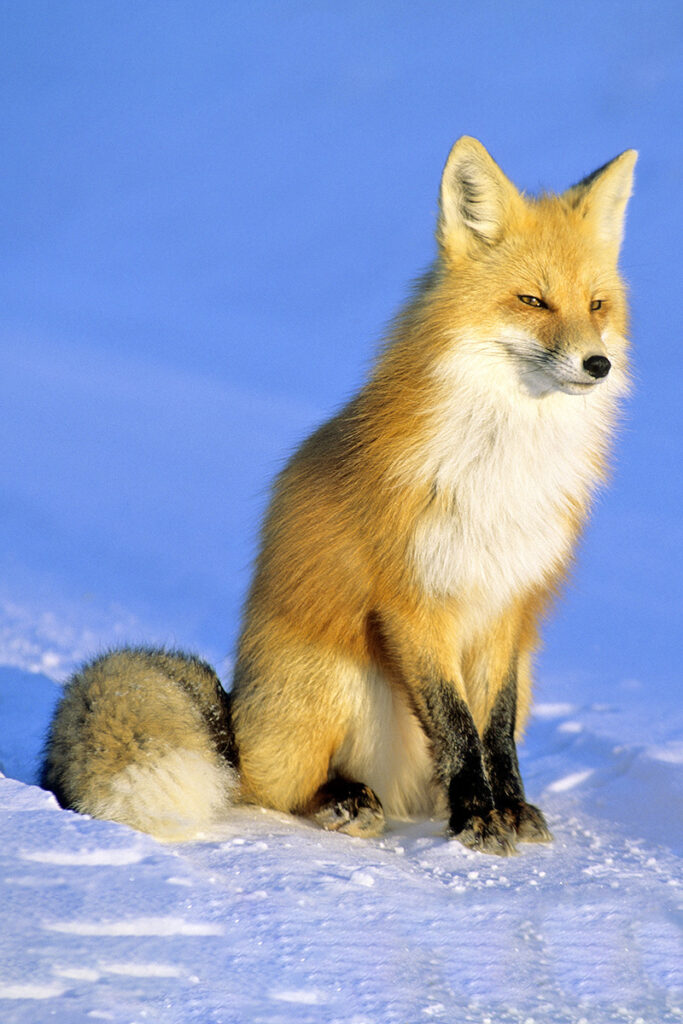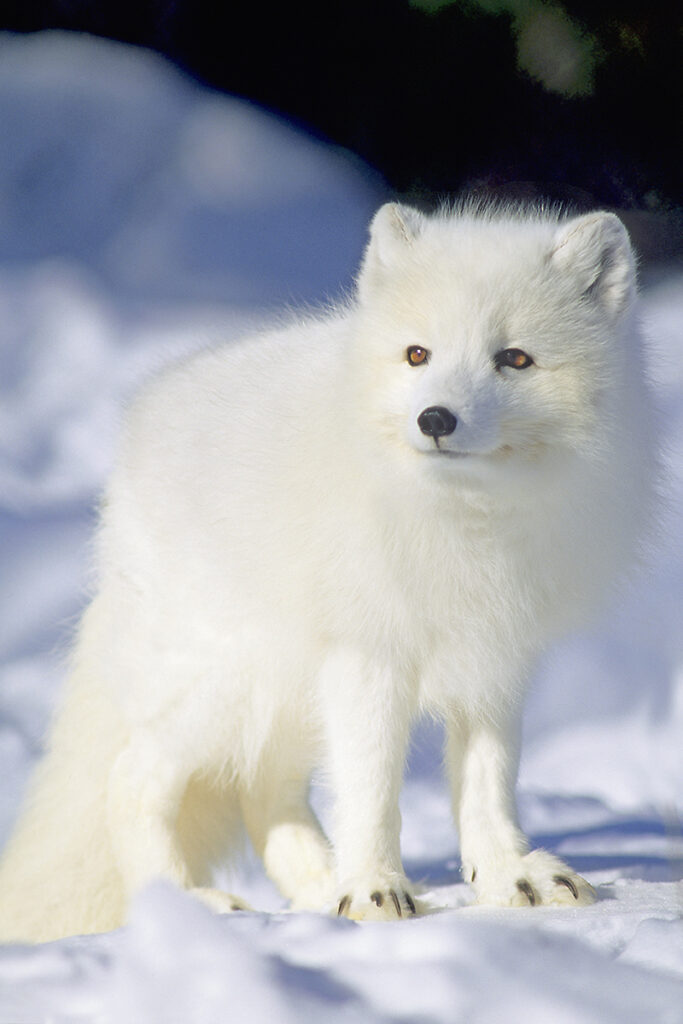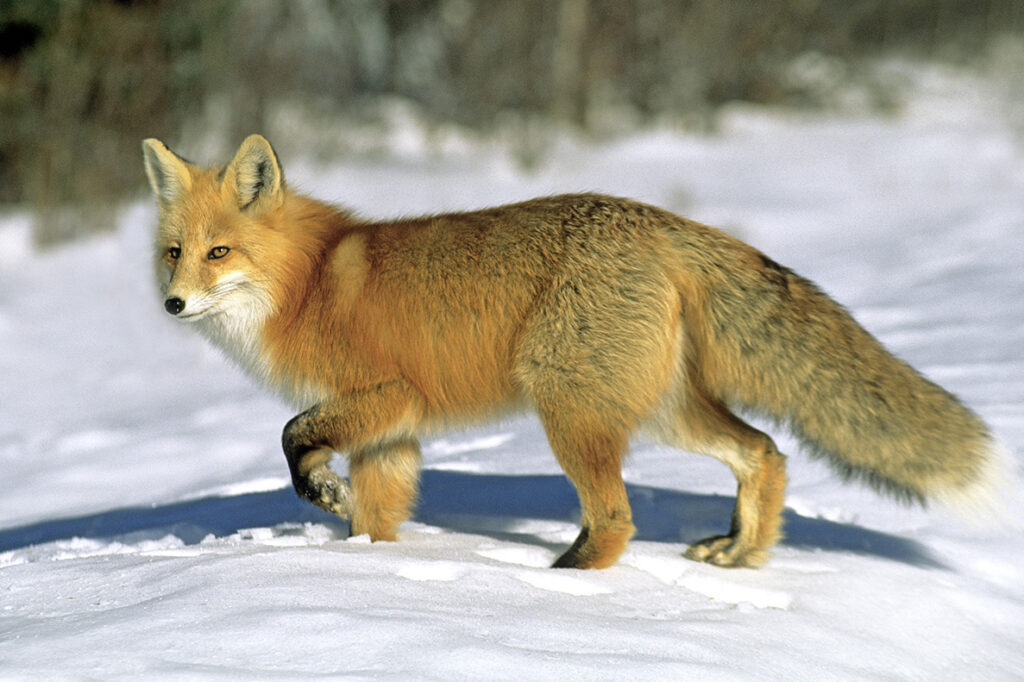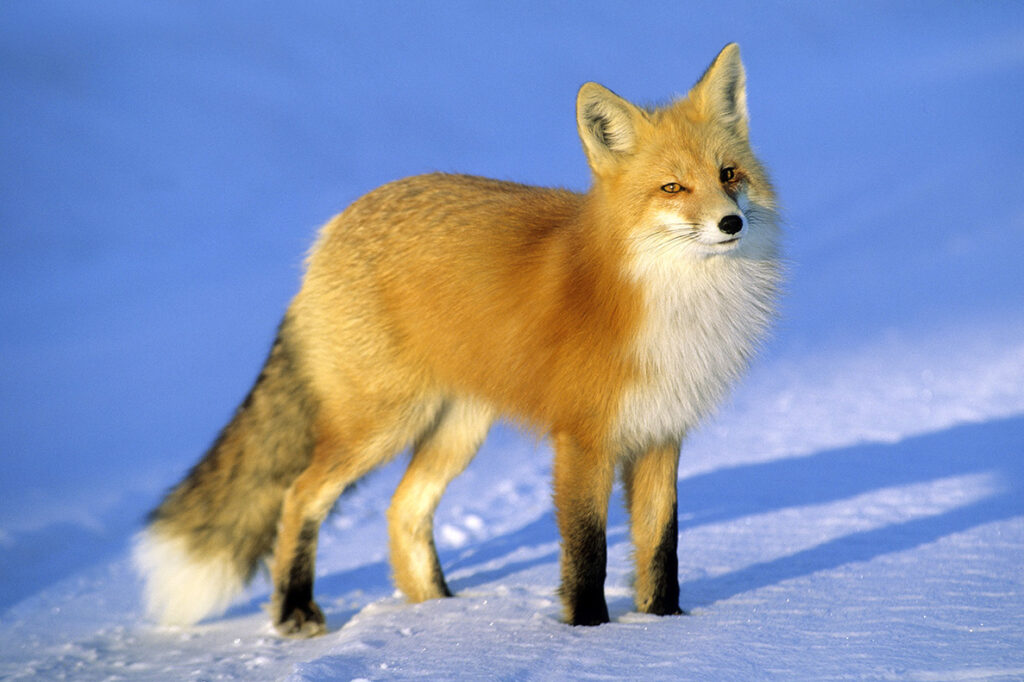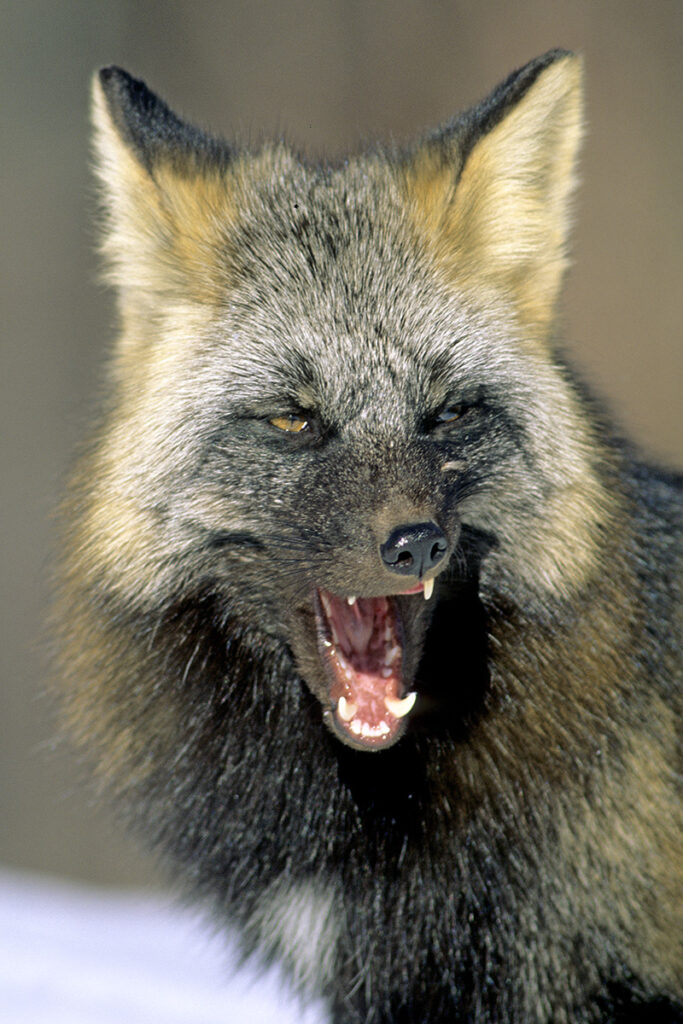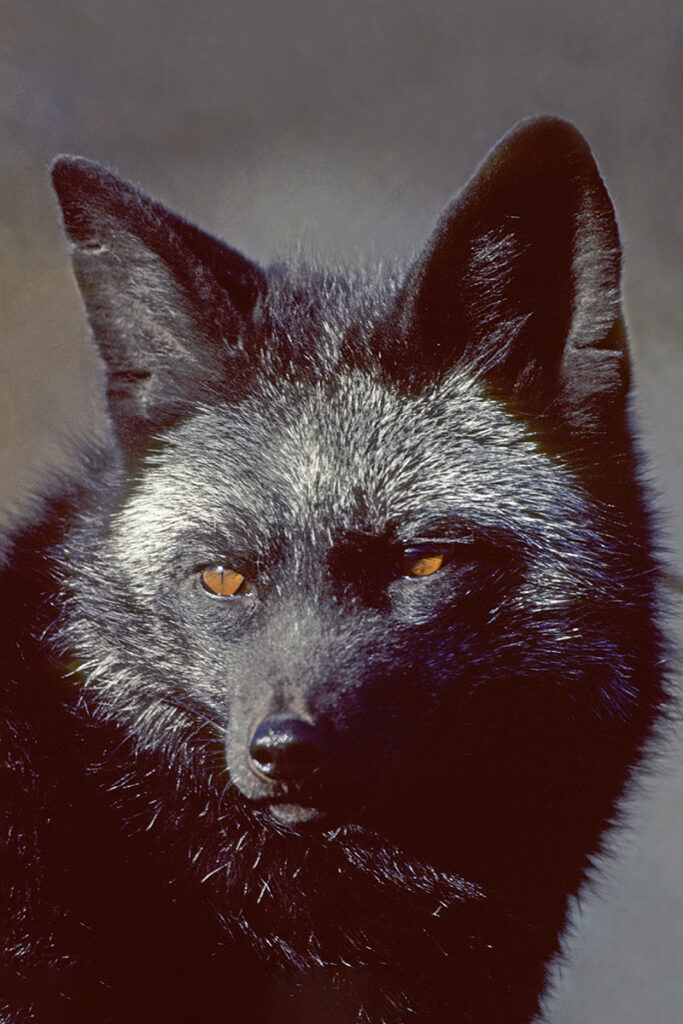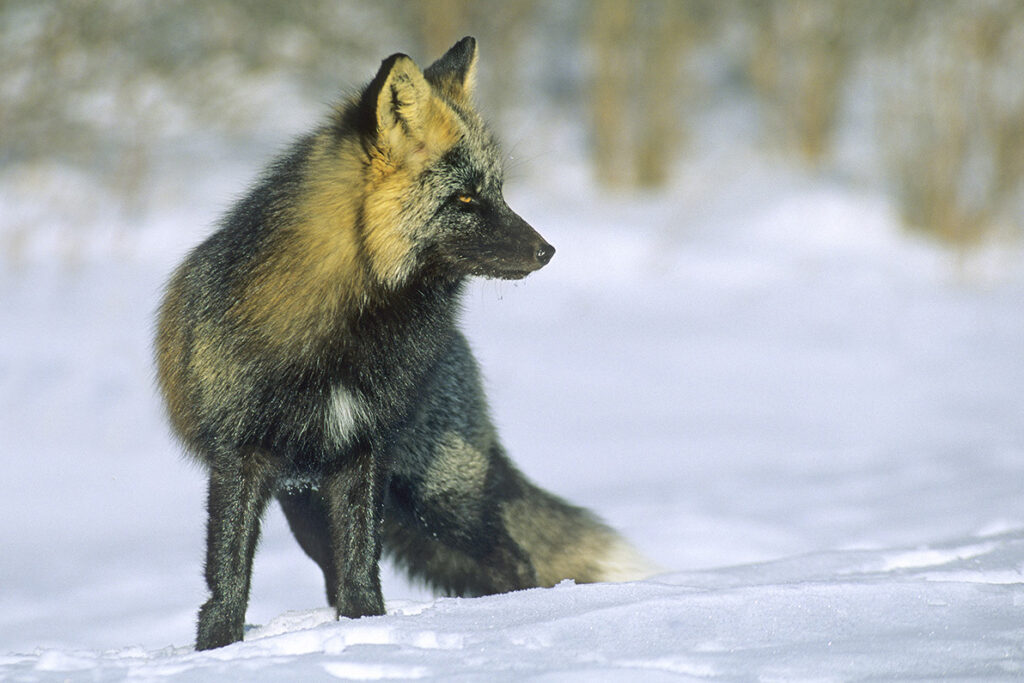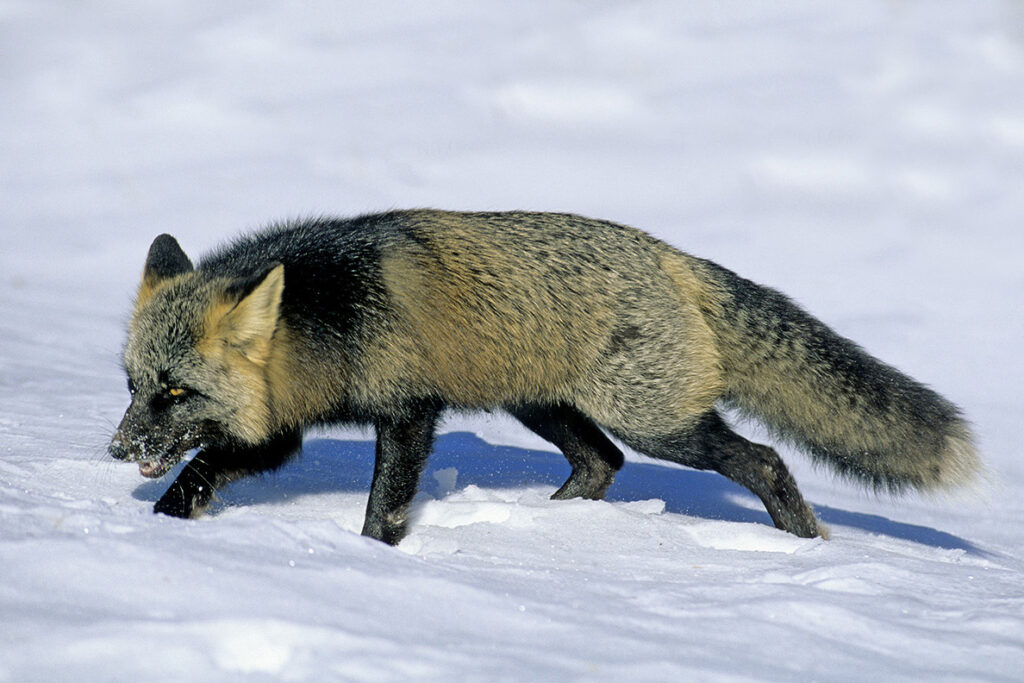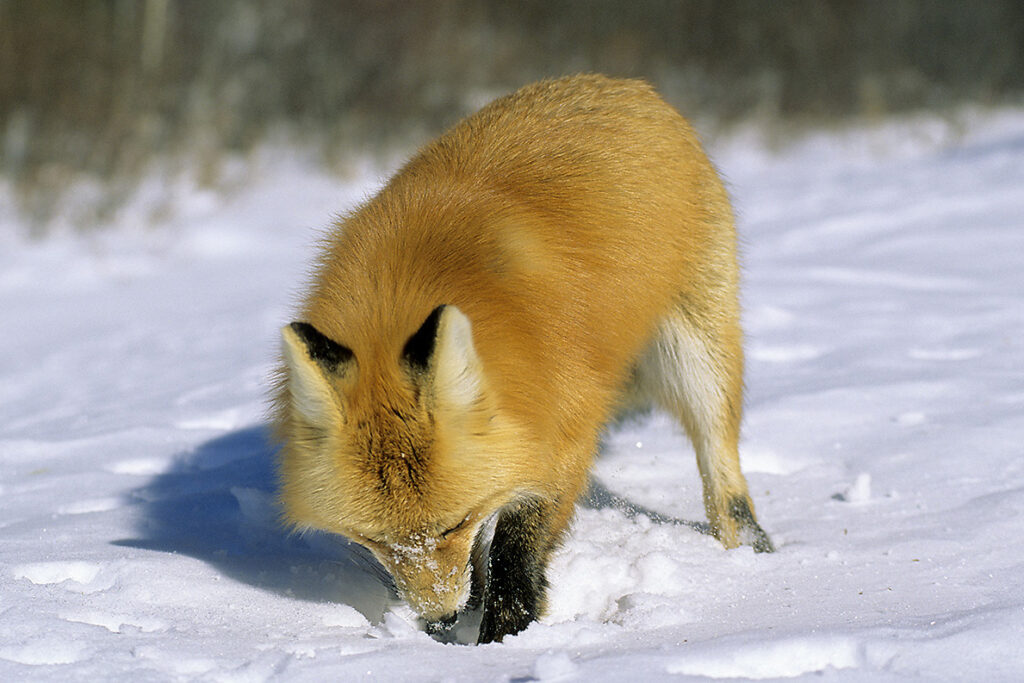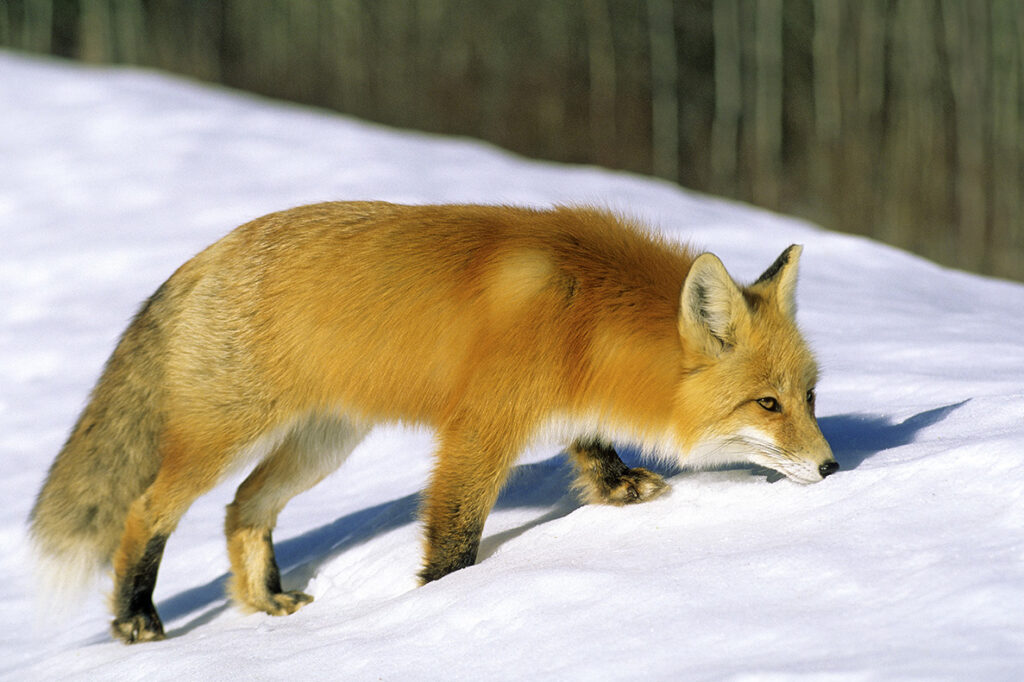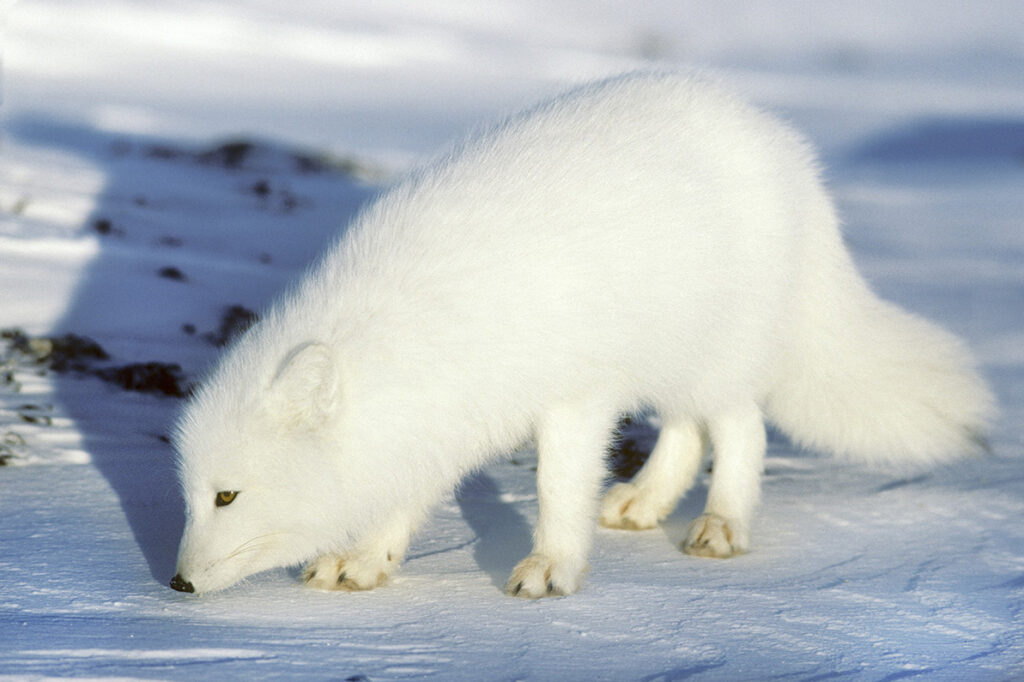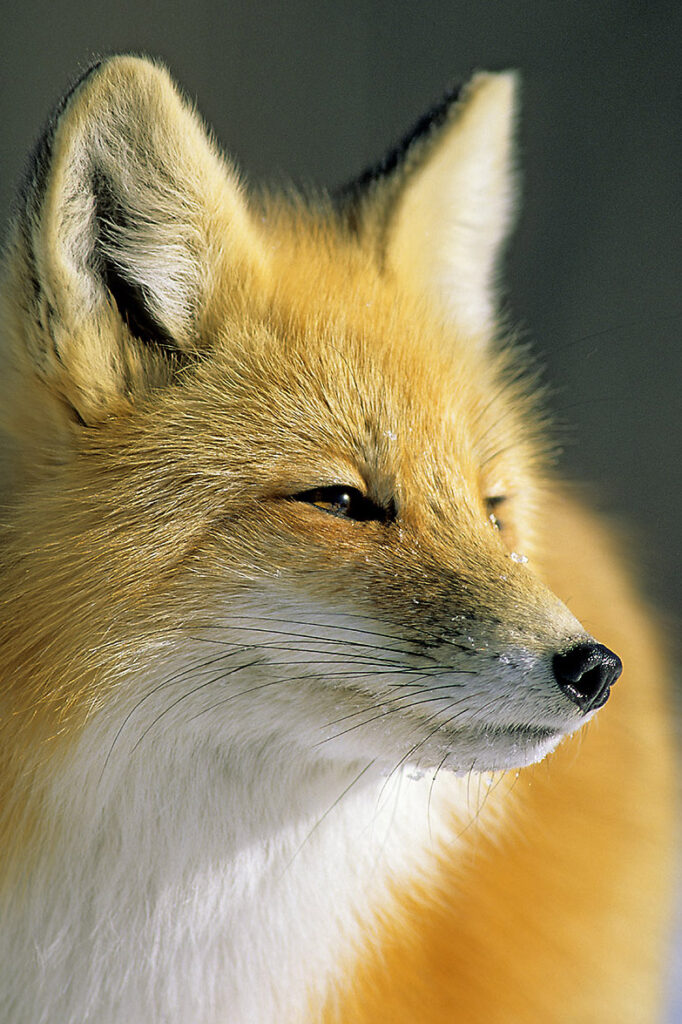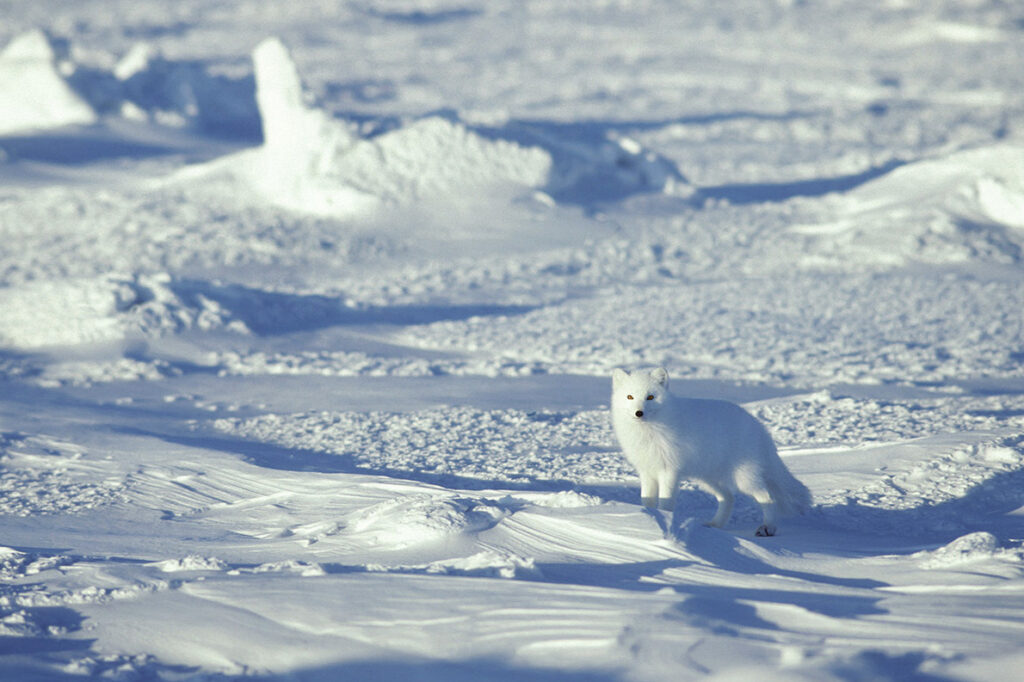Two species of foxes live in the Canadian Arctic, the cosmopolitan red fox, which has the widest distribution of any wild mammal on Earth, and the circumpolar Arctic fox. Generally, the red fox lives in forests, while the Arctic fox lives on the tundra. In the past 50 years, however, red foxes in North America have slowly moved beyond the treeline, penetrating farther and farther into the tundra of the Arctic. The red fox is now a year-round resident on the Barren Lands of Arctic Canada. It also lives on Baffin Island, and it has even been sighted along the southern end of Ellesmere Island, 1,050 kilometres (650 mi) north of the Arctic Circle and 1,500 kilometres (930 mi) from the nearest forest.
Wherever the territories of the two foxes overlap, the red fox is always dominant over the compact Arctic fox. The reds, which may be up to 60 percent heavier, commonly chase the white fox whenever the two meet, ousting them from dens when home sites are in short supply and killing their pups. When competition is intense, they may even kill the adults.
At first glance, the red fox seems capable of not only surviving in the Arctic, but thriving. Like the Arctic fox, the russet canid is a skilled hunter of lemmings, hares and nesting birds. It can scale precipitous seabird-nesting cliffs with the kind of agility an Arctic fox would envy. In the Bering Sea, I saw a daredevil female red fox raid a cliff-nesting colony of murres and kittiwakes. Jumping effortlessly from ledge to ledge, she cleaned out one nest after another. The red fox has even been seen on the sea ice scavenging the carcasses left by hunting polar bears.
In northern Canada, although the majority of red foxes are red, up to a quarter of them have reddish brown fur with buffy patches on the hips and shoulders and a distinct “cross” of dark fur across the shoulders and are called cross foxes, or have black fur tipped with white and are called silver foxes.
The fur of the cross fox on the left, is dramatically different than that of the silver fox on the right.
A cross fox forages for rodents under the snow.
When a red fox smells or hears a rodent running through its tunnel under the snow it may have only seconds to capture it before the prey escapes..
A litter of four to six red fox pups may contain a mixture of colour variations.
Young red foxes appear at the mouth of their natal den when they are around four weeks old. Wrestling, chewing, and chasing matches among littermates help them build coordination and strong bones.
If the dominant red fox can do everything that the Arctic fox can, why haven’t red foxes simply taken over? Throughout the Arctic, white foxes still greatly outnumber reds. The probable explanation has to do with energy. As capable as the red fox is, it may not be able to outfox the cold, and in the end, the animal’s anatomy may prevent it from deposing the better-adapted Arctic fox.
In the 1800s, biologist Joel Allen developed his famous theory to explain how animals conserve heat, and he must have had the Arctic fox in mind. According to Allen’s Rule, animals from cold climates have smaller ears, muzzles, legs and tails than their relatives from warmer climates. The Arctic fox, compared with the red fox, fits the pattern perfectly.
In fact, everything about an Arctic fox is designed to cope with the cold. To begin with, the underside of its feet are covered with fur, and its coat provides the best insulation of any land mammal studied. The Arctic fox can weather temperatures as low as -45 degrees C (-49°F) before it must increase its metabolism to keep warm. In one study, an Arctic fox was subjected to an astonishing -80 degrees C (-112°F) for an hour, and its body temperature never dropped a degree.
The red fox, on the other hand, must raise its metabolism as soon as the temperature drops below a relatively balmy -13 degrees C (8°F). With its thermostat set so high, a red fox living in the Arctic must frequently tap into its energy reserves. Its anatomical energy costs keep the red fox living on the edge, hanging on but unable to conquer – a fact of life that may well be the reason it will never evict its Arctic cousin.
The larger ears and muzzle of the red fox on the left can be seen when compared with the Arctic fox on the right.
The Arctic fox is a circumpolar inhabitant of the Arctic regions of the Northern Hemisphere.
The fur of most Arctic foxes changes from pure white in winter to dark brown with a tan belly in summer.
About the Author – Dr. Wayne Lynch
For more than 40 years, Dr. Wayne Lynch has been writing about and photographing the wildlands of the world from the stark beauty of the Arctic and Antarctic to the lush rainforests of the tropics. Today, he is one of Canada’s best-known and most widely published nature writers and wildlife photographers. His photo credits include hundreds of magazine covers, thousands of calendar shots, and tens of thousands of images published in over 80 countries. He is also the author/photographer of more than 45 books for children as well as over 20 highly acclaimed natural history books for adults including Windswept: A Passionate View of the Prairie Grasslands; Penguins of the World; Bears: Monarchs of the Northern Wilderness; A is for Arctic: Natural Wonders of a Polar World; Wild Birds Across the Prairies; Planet Arctic: Life at the Top of the World; The Great Northern Kingdom: Life in the Boreal Forest; Owls of the United States and Canada: A Complete Guide to their Biology and Behavior; Penguins: The World’s Coolest Birds; Galapagos: A Traveler’s Introduction; A Celebration of Prairie Birds; and Bears of the North: A Year Inside Their Worlds. In 2022, he released Wildlife of the Rockies for Kids, and Loons: Treasured Symbols of the North. His books have won multiple awards and have been described as “a magical combination of words and images.”
Dr. Lynch has observed and photographed wildlife in over 70 countries and is a Fellow of the internationally recognized Explorers Club, headquartered in New York City. A Fellow is someone who has actively participated in exploration or has substantially enlarged the scope of human knowledge through scientific achievements and published reports, books, and articles. In 1997, Dr. Lynch was elected as a Fellow to the Arctic Institute of North America in recognition of his contributions to the knowledge of polar and subpolar regions. And since 1996 his biography has been included in Canada’s Who’s Who.



